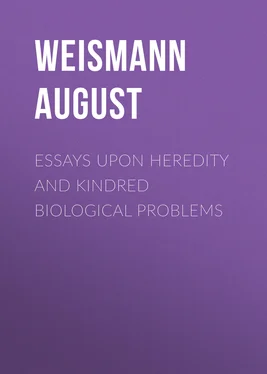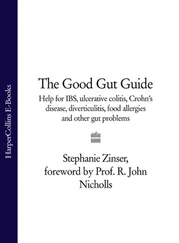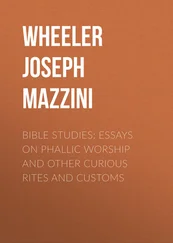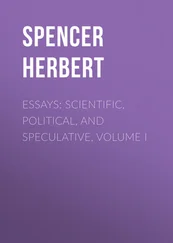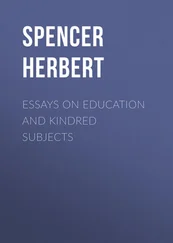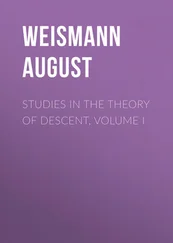August Weismann - Essays Upon Heredity and Kindred Biological Problems
Здесь есть возможность читать онлайн «August Weismann - Essays Upon Heredity and Kindred Biological Problems» — ознакомительный отрывок электронной книги совершенно бесплатно, а после прочтения отрывка купить полную версию. В некоторых случаях можно слушать аудио, скачать через торрент в формате fb2 и присутствует краткое содержание. Жанр: foreign_antique, Биология, на английском языке. Описание произведения, (предисловие) а так же отзывы посетителей доступны на портале библиотеки ЛибКат.
- Название:Essays Upon Heredity and Kindred Biological Problems
- Автор:
- Жанр:
- Год:неизвестен
- ISBN:нет данных
- Рейтинг книги:5 / 5. Голосов: 1
-
Избранное:Добавить в избранное
- Отзывы:
-
Ваша оценка:
- 100
- 1
- 2
- 3
- 4
- 5
Essays Upon Heredity and Kindred Biological Problems: краткое содержание, описание и аннотация
Предлагаем к чтению аннотацию, описание, краткое содержание или предисловие (зависит от того, что написал сам автор книги «Essays Upon Heredity and Kindred Biological Problems»). Если вы не нашли необходимую информацию о книге — напишите в комментариях, мы постараемся отыскать её.
Essays Upon Heredity and Kindred Biological Problems — читать онлайн ознакомительный отрывок
Ниже представлен текст книги, разбитый по страницам. Система сохранения места последней прочитанной страницы, позволяет с удобством читать онлайн бесплатно книгу «Essays Upon Heredity and Kindred Biological Problems», без необходимости каждый раз заново искать на чём Вы остановились. Поставьте закладку, и сможете в любой момент перейти на страницу, на которой закончили чтение.
Интервал:
Закладка:
A golden eagle which ‘died at Vienna in the year 1719, had been captured 104 years previously’ (Brehm, ‘Leben der Vögel,’ p. 72).
A falcon (species not mentioned) is said to have attained an age of 162 years (Knauer, ‘Der Naturhistoriker,’ Vienna, 1880).
A white-headed vulture which was taken in 1706 died in the Zoological Gardens at Vienna (Schönbrunn) in 1824, thus living 118 years in captivity (l. c.).
The example of the bearded vulture, mentioned in the text, is quoted from Schinz’s ‘Vögel der Schweiz,’ p. 196.
The wild goose must live for upwards of 100 years, according to Naumann (l. c., p. 127). The proof of this is not, however, forthcoming. A wild goose which had been wounded reached its eighteenth year in captivity.
Swans are said to have lived 300 years(?), (Naumann, l. c., p. 127).
It is evident that observations upon the duration of life in wild birds can only rarely be made, and that they are usually the result of chance and cannot be verified. It is on this account all the more to be desired that every ascertained fact should be collected.
If the long life of birds has been correctly interpreted as compensation for their feeble fertility and for the great mortality of their young, it will be possible to estimate the length of life in a species, without direct observation, if we only know its fertility and the percentage of individuals destroyed. This percentage can, however, at best, be known only as an average. If we consider, for example, the enormous number of sea birds which breed in summer on the rocks and cliffs of the northern seas, and if we remember that the majority of these birds lay but one, or at most two eggs yearly, and that their young are exposed to very many destructive agencies, we are forced to the conclusion that they must possess a very long life, so that the breeding period may be many times repeated. Their number does not diminish. Year after year countless numbers of these birds cover the rocks, from summit to sea line; millions of them rest there, and rise in the air like a thick cloud whenever they are disturbed. Even in those localities which are every year visited by man in order to effect their capture, the number does not appear to decrease, unless the birds are disturbed and are therefore prompted to seek other breeding-places. From the small island of St. Kilda, off Scotland, 20,000 young gannets ( Sula ) and an immense number of eggs are annually collected; and although this bird only lays a single egg yearly and takes four years to attain maturity, the numbers do not diminish 6. 30,000 sea-gulls’ eggs and 20,000 terns’ eggs are yearly exported from the breeding-places on the island of Sylt, but in this case it appears that a systematic disturbance of the birds is avoided by the collectors, and no decrease in their numbers has yet taken place 7. The destruction of northern birds is not only caused by man, but also by various predaceous mammals and birds. Indeed the dense mass of birds which throng the cliffs is a cause of destruction to many of the young and to the eggs, which are pushed over the edge of the rocks. According to Brehm the foot of these cliffs is ‘always covered with blood and the dead bodies of fledglings.’
Such birds must attain a great age or they would have been exterminated long ago: the minimum duration of life necessary for the maintenance of the species must in their case be a very high one.
Note 2. The Duration of Life among Mammals
The statements upon this subject in the text are taken from many sources; from Giebel’s ‘Säugethiere,’ from Oken’s ‘Naturgeschichte,’ from Brehm’s ‘Illustrirtem Thierleben,’ and from an essay of Knauer in the ‘Naturhistoriker,’ Vienna, 1880.
Note 3. The Duration of Life among Mature Insects
A short statement of the best established facts which I have been able to find is given below. I have omitted the lengthening of imaginal life which is due to hybernation in certain species. In almost all orders of insects there are certain species which emerge from the pupa in the autumn, but which first reproduce in the following spring. The time spent in the torpid condition during winter cannot of course be reckoned with the active life of the species, for its vital activity is either entirely suspended for a time by freezing ( Anabiosis : Preyer 8), or it is at any rate never more than a vita minima , with a reduction of assimilation to its lowest point.
The following account does not make any claim to contain all or even most of the facts scattered through the enormous mass of entomological literature, and much less all that is privately known by individual entomologists. It must therefore be looked upon as merely a first attempt, a nucleus, around which the principal facts can be gradually collected. It is unnecessary to give any special information as to the duration of larval life, for numerous and exact observations upon this part of the subject are contained in all entomological works.
I. Orthoptera
Gryllotalpa. The eggs are laid in June or July, and the young are hatched in from two to three weeks; they live through the winter, and become sexually mature in the following May or June. ‘When the female has deposited her eggs, her body collapses, and afterwards she does not survive much longer than a month.’ ‘According as the females are younger or older, they live a longer or shorter life, and hence some females are even found in the autumn’ (Rösel, ‘Insektenbelustigungen,’ Bd. II. p. 92). Rösel believes that the female watches the eggs until they are hatched, and this explains the fact that she outlives the process of oviposition by about a month. It is not stated whether the males die at an earlier period.
Gryllus campestris becomes sexually mature in May, and sings from June till October, ‘when they all die’ (Oken, ‘Naturgeschichte,’ Bd. II. Abth. iii. p. 1527). It is hardly probable that any single individual lives for the whole summer; probably, as in the case of Gryllotalpa , the end of the life of those individuals which first become mature, overlaps the beginning of the life of others which reach maturity at a later date.
Locusta viridissima and L. verrucivora are mature at the end of August; they lay their eggs in the earth during the first half of September and then die. It is probable that the females do not live for more than four weeks in the mature state. It is not known whether the males of this or other species of locusts live for a shorter period.
I have found Locusta cantans in plenty, from the beginning of September to the end of the month. In captivity they die after depositing their eggs: the males are probably more short-lived, for towards the middle and end of September they are much less plentiful than the females.
Acridium migratorium ‘dies after the eggs are laid’ (Oken, ‘Naturgeschichte’).
The male Termes probably live for a short time only, although exact observations upon the point are wanting. The females ‘seem sometimes to live four or five years,’ as I gather from a letter from Dr. Hagen, of Cambridge, Mass., U.S.A.
Ephemeridae. Rösel, speaking of Ephemera vulgata (‘Insektenbelustigungen,’ Bd. II. der Wasserinsekten, 2 teKlasse, p. 60 et seq.), says:—‘Their flight commences at sunset, and comes to an end before midnight, when the dew begins to fall.’ ‘The pairing generally takes place at night and lasts but a short time. As soon as the insects have shed their last skin, in the afternoon or evening, they fly about in thousands, and pair almost immediately; but by the next day they are all dead. They continue to emerge for many days, so that when yesterday’s swarm is dead, to-day a new swarm is seen emerging from the water towards the evening.’ ‘They not only drop their eggs in the water, but wherever they may happen to be,—on trees, bushes, or the earth. Birds, trout and other fish lie in wait for them.’
Читать дальшеИнтервал:
Закладка:
Похожие книги на «Essays Upon Heredity and Kindred Biological Problems»
Представляем Вашему вниманию похожие книги на «Essays Upon Heredity and Kindred Biological Problems» списком для выбора. Мы отобрали схожую по названию и смыслу литературу в надежде предоставить читателям больше вариантов отыскать новые, интересные, ещё непрочитанные произведения.
Обсуждение, отзывы о книге «Essays Upon Heredity and Kindred Biological Problems» и просто собственные мнения читателей. Оставьте ваши комментарии, напишите, что Вы думаете о произведении, его смысле или главных героях. Укажите что конкретно понравилось, а что нет, и почему Вы так считаете.
